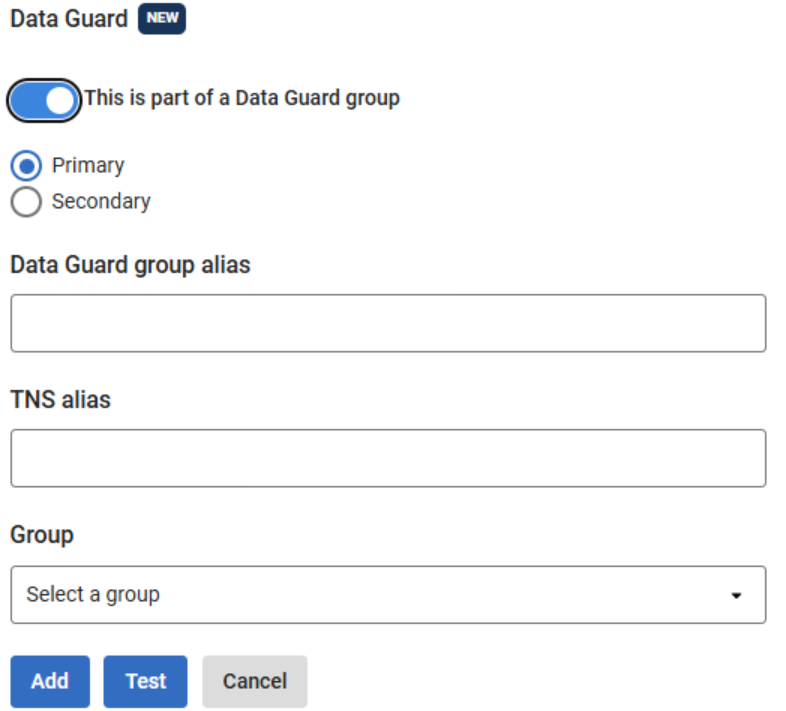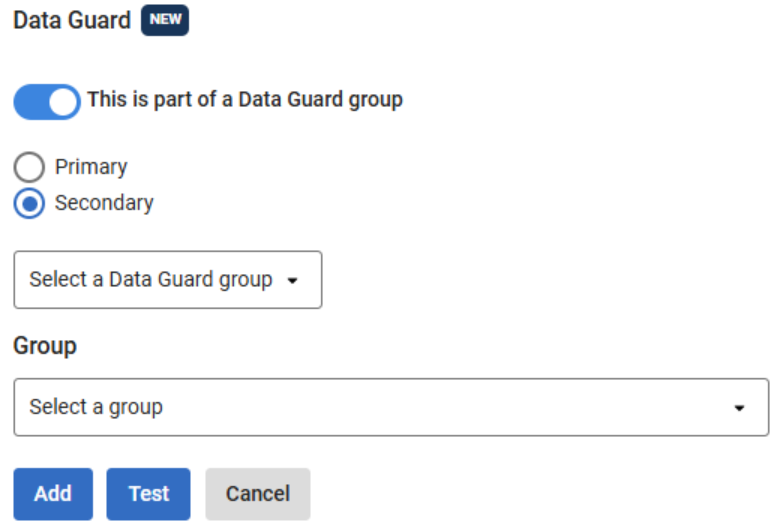Adding Oracle Instances with Data Guard
Published 28 August 2025
Additional configuration required
Make sure you have read Preparing Oracle for monitoring before adding an Oracle instance to Redgate Monitor.
Additionally, run the following command before adding any Oracle instance that is part of Data Guard:
-- For Single Instances GRANT SYSDBA TO redgatemonitor; -- For Multi-Tenant Instances GRANT SYSDBA TO C##redgatemonitor container=all;
Use this procedure to register Oracle instances that are part of Data Guard, either as a Primary creating a new group or as a Secondary joining an existing group.
Follow the standard steps from Adding Oracle on Linux to fill in the basic connection details above the Data Guard section.
Please note
Oracle Data Guard connections require TNS. For more information see: Connecting using TNSNames.ora.
In the Data Guard section, enable the toggle to indicate that this instance belongs to a Data Guard group.
Choose the instance role:
- Primary:
- Enter a Data Guard group alias. This custom alias is used to link Secondary instances to this group.
- Provide a TNS alias that uses an ADDRESS_LIST containing all replicas, ensuring continuity during failovers/switchovers.
- Secondary:
- Use the dropdown to select an existing Data Guard group to join.
- Ensure your connection settings (e.g. TNS alias) correctly reference all group members.
Known limitations
We treat Active Data Guard standby instances as passive standbys and do not actively monitor them.






